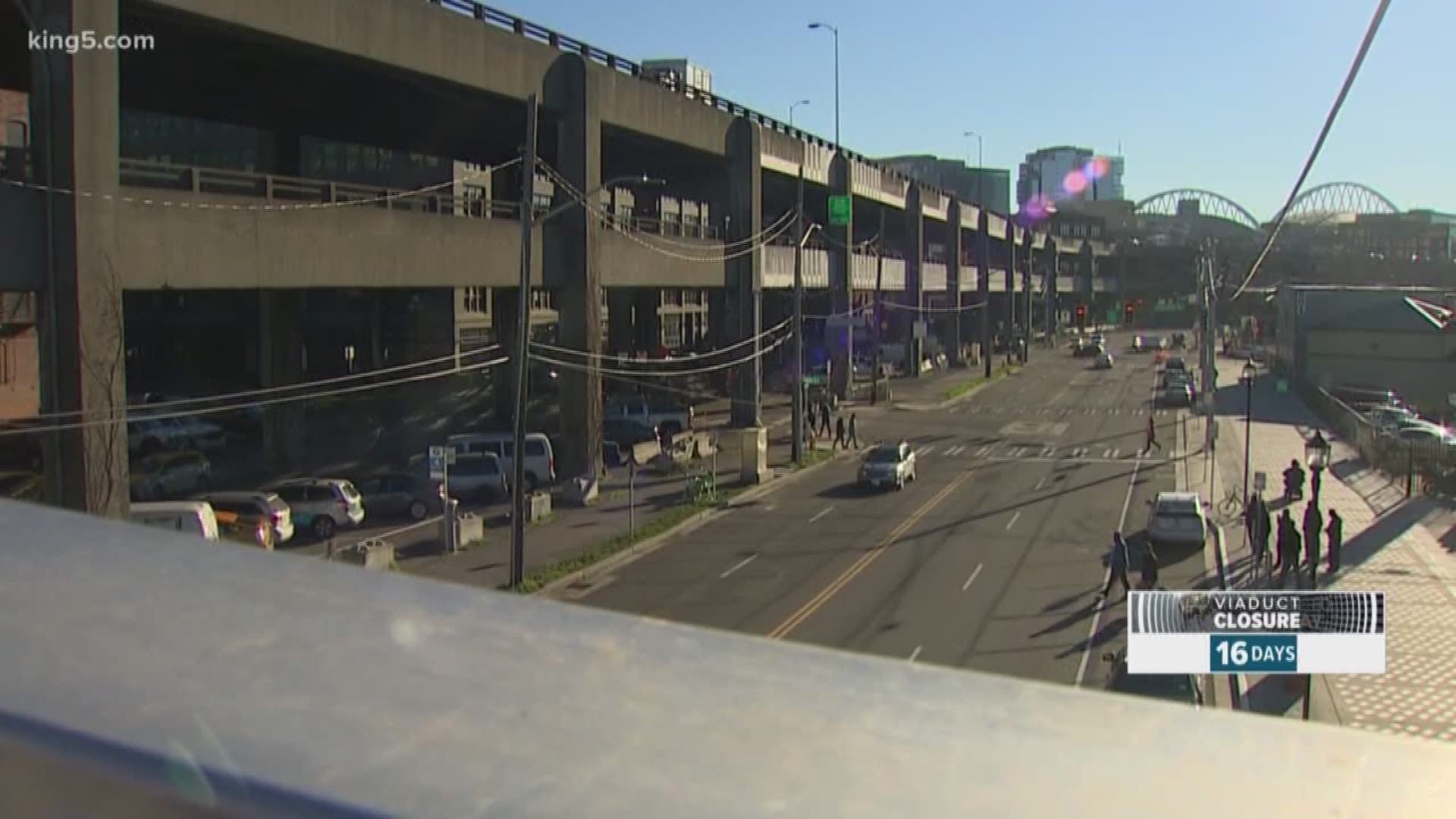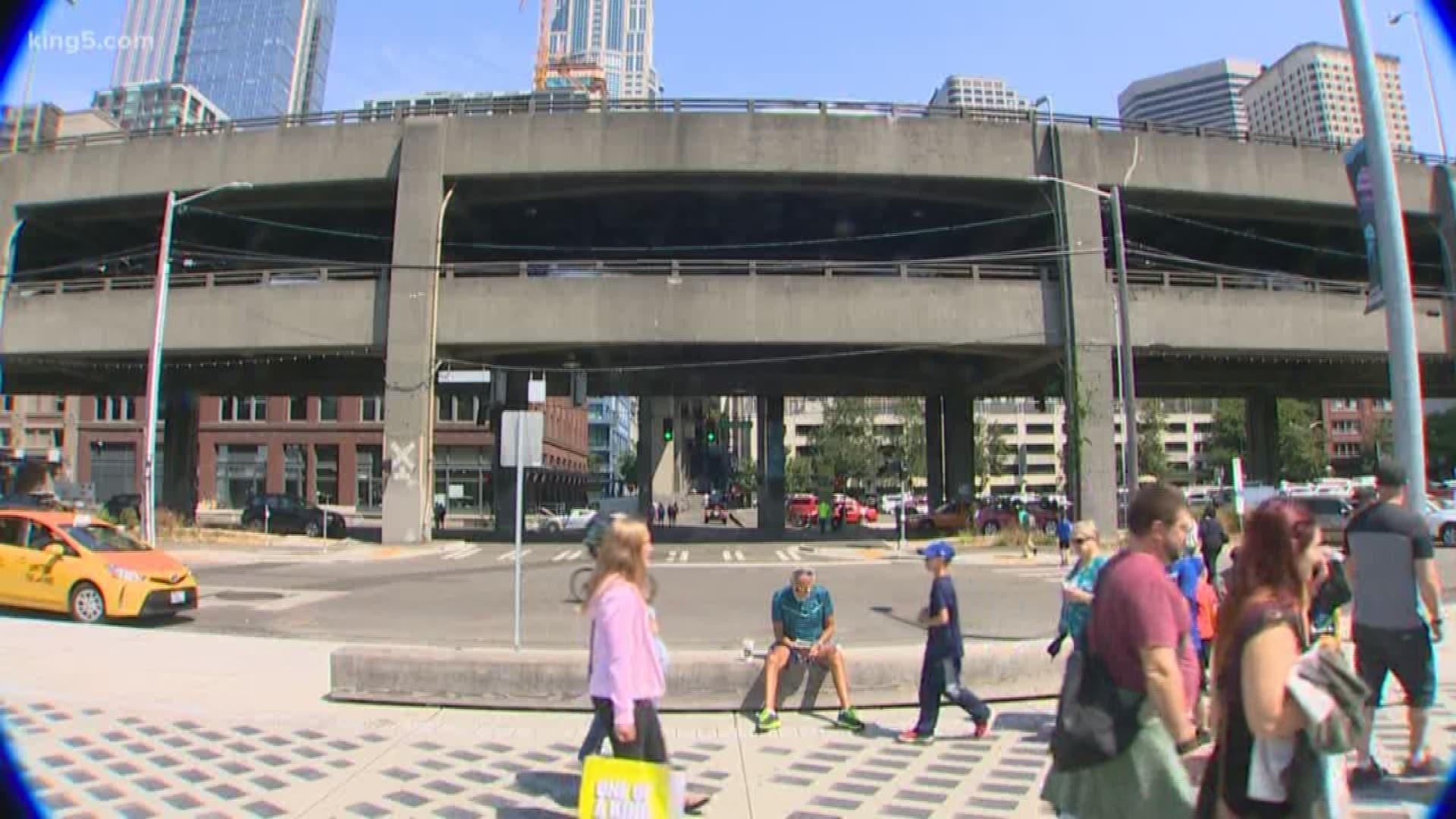SEATTLE — What was once a shimmering symbol of progress is now seen by many as a barrier to the future.
“Seattle wanted to be that modern big city,” Leonard Garfield, executive director of Seattle’s Museum of History and Industry, said of why Seattle's Alaskan Way Viaduct was built in the 1950's.
Garfield said the Alaskan Way Viaduct was the major infrastructure in the post-World War II era. It was the original center city connector building off the relatively new Highway 99 Aurora Bridge, which connected North Seattle to the downtown core.
“It was placed along the waterfront, because that was the least number of properties that had to be condemned,” Garfield said. “The topography was the flattest and simplest. It was most direct route.”
The viaduct was also used as a key point in a 1961 city marketing campaign touting the Battery Street Tunnel’s ventilation and speedy access to West Seattle.
However, the viaduct eventually was viewed as inhibiting city growth.
“Downtown merchants protested strongly,” Garfield said.
Off-ramps were created, and at one point the city discussed encircling Seattle with a pair of concentric ringed roads – Interstate 5 on the outside ring to the east, the viaduct on the west, a proposed Connecticut Street viaduct on the south, and a proposed bay freeway on the north.
“People have been thinking about getting rid of the viaduct, redesigning the viaduct, finding alternatives to the viaduct almost from the day that it opened,” Garfield said.
A freeway revolt blocked that idea and viaduct discussions boiled over in 2001 when the magnitude 6.8 Nisqually earthquake hit. It took the viaduct cracking and crumbling in places before a replacement was first mentioned.
After the quake, it took several more years until then-Governor Christine Gregoire announced plans to tear down the structure in January 2008. A year later officials agreed to replace the viaduct with a tunnel, and Gregoire approved a $2.8 billion funding plan in spring 2009.
However, litigation is now underway to determine who will pay for millions in cost overruns.
A generation later – 66 years after the viaduct opened – that link to the past will go away to allow for a more, perhaps, modern definition of progress.
“The viaduct served its purpose,” Garfield said. “It served its purpose effectively.
Join KING 5's Seattle Tunnel Traffic Facebook group to stay up-to-date on the latest Seattle tunnel and Viaduct news and get tips to battle traffic during the three-week Viaduct closure in January.
More Seattle viaduct and tunnel coverage
- Seattle viaduct to close January 11 at 10 p.m.
- Seattle tunnel opening celebration set for February 2-3
- Why the viaduct will close for 3 weeks before tunnel opening
- Getting around after the tunnel opens: Driving southbound
- Getting around after the tunnel opens: Driving northbound
- SR 99 tunnel toll rates will range from $1 to $2.25 in Seattle


